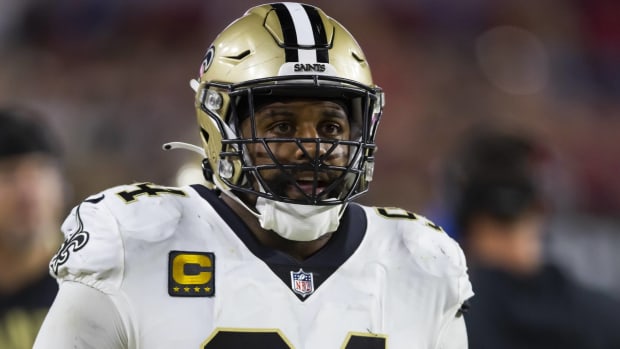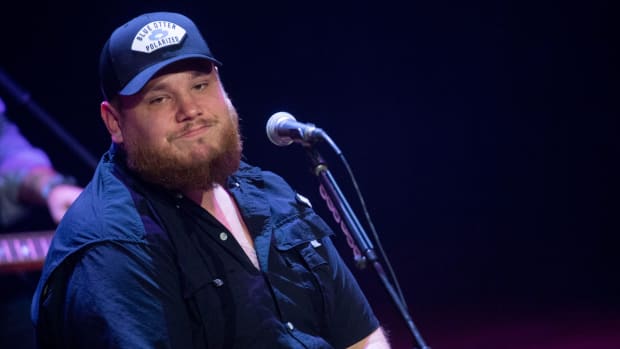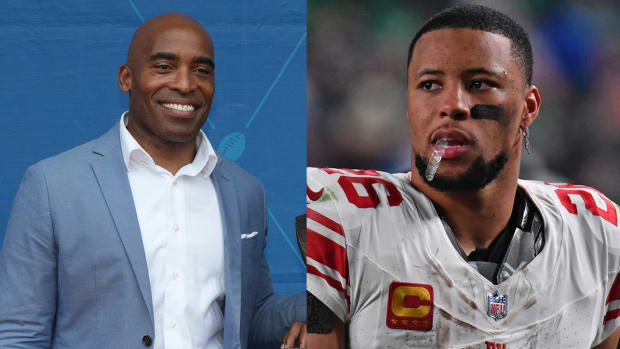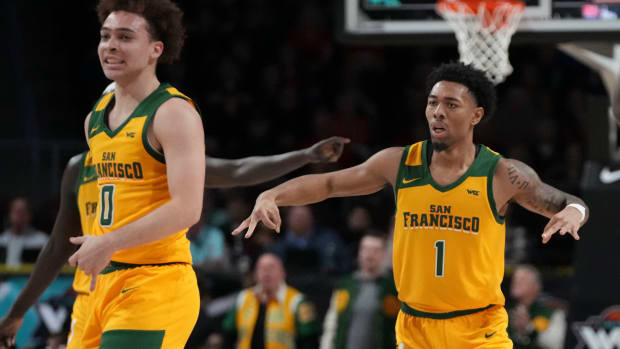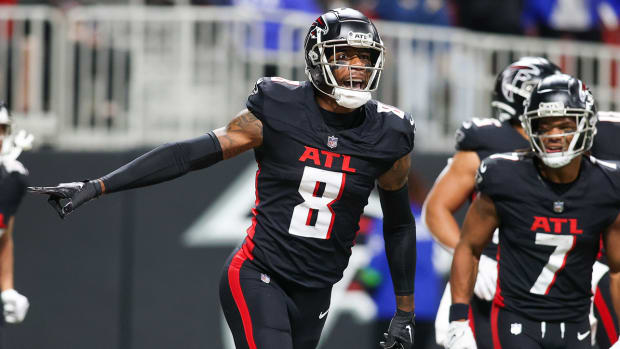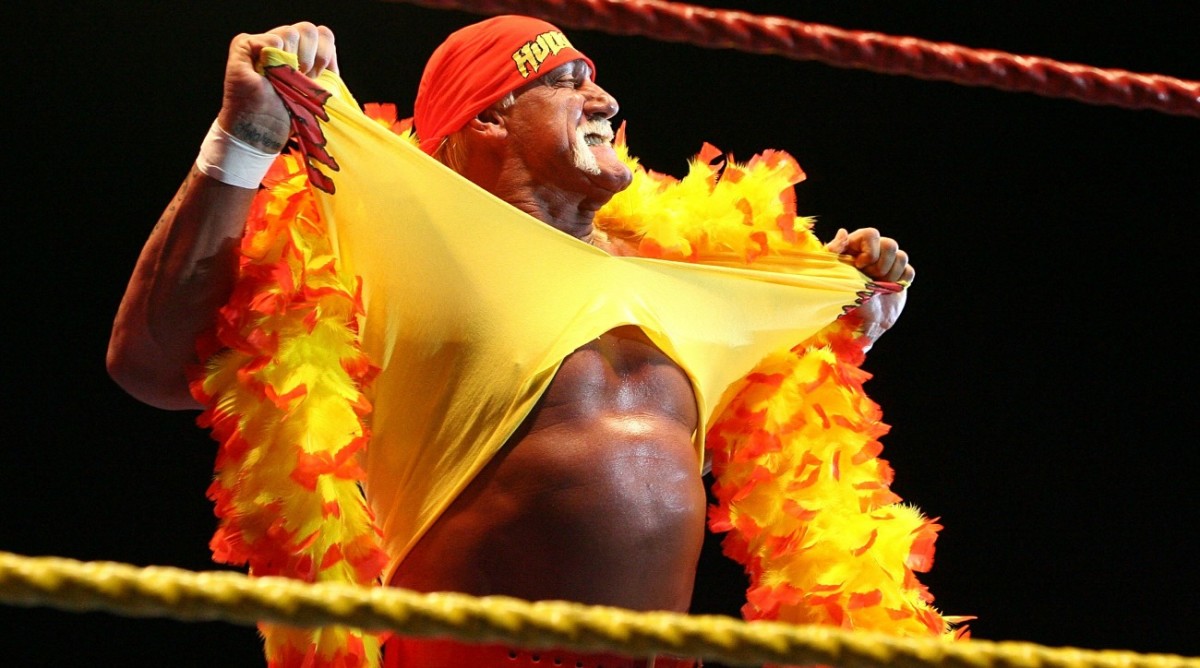
Hulk Hogan’s 10 best pop culture moments
Today marks Hulk Hogan’s 63rd birthday. Few men or women in the history of professional wrestling have been pop culture mainstays on the level that Hogan has, for as long as he has. You could walk down the streets of any city in the world and say the name “Hulk Hogan” and have a hard time finding anyone who wasn’t familiar with him.
So what made Hulk such an icon? In celebration of his big day, we’re looking back at Hogan’s top 10 pop culture moments.
1. Rocky III (1982)
While Hogan had been a professional wrestler for over five years by the time he filmed Rocky III, he hadn’t yet reached pop culture stardom. Yes, he had already started to become a big name in wrestling, including a feud with Andre The Giant that saw the two have a big-time match at Shea Stadium in August 1980. However, it was his role as “Thunderlips” that helped Hogan cross-over into pop culture for the first time.
As the story goes, Hogan had been wrestling for Vince McMahon Sr.’s World Wide Wrestling Federation (WWWF, later the WWF, today the WWE). The elder McMahon didn’t approve of Hogan filming the movie, and Hulk’s time in McMahon’s promotion came to an end due to the disagreement. This resulted in Hogan’s wrestling career moving to Minnesota and the AWA, where he became an even bigger wrestling star while Rocky catapulted him to mainstream recognition.
2. The Rock And Wrestling Connection
[youtube:https://www.youtube.com/watch?v=mlyTMNOAHv0]
Hulk was eventually brought back to the McMahon’s promotion when Vince Jr. took over the family business, purchasing the company from his father. Vince Jr. knew he needed a franchise star to take his promotion national, and Hogan was the man that he wanted for the job. There was no doubt that Hogan had the look of a star, and thanks to his role in Rocky III, he now had some crossover appeal to the masses.
Hogan left the AWA and won the WWF title from The Iron Sheik on Jan. 23, 1984 at Madison Square Garden, just four weeks after his return to the promotion. The future of professional wrestling in the U.S. changed that night as “Hulkamania” was born.
Over the next year, Hogan and McMahon steered the WWF into the national mainstream through a successful partnership with MTV and the music industry, dubbed “The Rock and Wrestling Connection.” Cyndi Lauper, one of the biggest music stars of this time period, started to appear on WWF television. She even had the Hulkster come on stage with her at the 1985 Grammy Awards as her “bodyguard.”
3. “Headlock On My Heart”
[youtube:https://youtu.be/HTW-5vSVEoU]
Cyndi Lauper wasn’t the only music star in the 1980s that did some cross promotion with professional wrestling. Dolly Parton, one of the biggest selling female artists in history, had Hogan appear in a music video for the song “Headlock On My Heart.” The performance was done as a spoof for Dolly’s short-lived ABC variety show, but it received a fair amount of mainstream attention.
The video featured Hogan and Parton at the altar, getting married, before Hogan takes her away into the fabulous world of wrestling.
4. Hosting Saturday Night Live
Several years before Dwayne “The Rock” Johnson became a regular on Saturday Night Live, Hulk Hogan became the first wrestler to be featured on the program, co-hosting it with Mr. T. The appearance came on March 30, 1985; the night before the very first WrestleMania.
Mr. T was one of the biggest pop-culture stars in the United States during 1985, thanks to his starring role on The A-Team. He also starred in Rocky III, the same film that catapulted Hogan to mainstream recognition a couple of years before. Without Mr. T and Cyndi Lauper alongside Hogan, it’s debatable whether WrestleMania would have ended up becoming the success that it ultimately did.
5. Hulk Hogan’s Rock ‘N’ Wrestling
For any child of the 1980s, Hogan is an icon on the level of any of the biggest mainstream sports stars of the era. Pro wrestling was riding a wave of pop culture success unseen in its history, with Hogan undeniably the face of the movement. Next, McMahon and Hogan set out to conquer another avenue of popular culture success: Saturday morning television.
Hulk Hogan’s Rock ‘N’ Wrestling started airing in the Fall of 1987 on CBS television. There were eventually 26 episodes and two seasons produced of the show, which aired first-run and in re-runs until the Summer of 1987. Though video footage of Hogan and his fellow WWF wrestlers was shown during the episodes, none of them provided the voices for their animated characters.
6. The Theme Song
Perhaps the most recognizable theme song in wrestling history, “Real American,” was originally produced for the tag team of Barry Windham and Mike Rotunda (known as the U.S. Express). However, the team soon bolted the WWF for the rival NWA. With the U.S. Express out of the picture, Hogan was then given the theme song that would forever be associated with Hulkamania.
The classic song has been used in many places outside of wrestling over the years, perhaps most famously at President Barack Obama’s 2011 White House Correspondent's Dinner. With Donald Trump in attendance, the president entered the room that night to “Real American” (a nod to his having recently released several documents related to his 1961 birth in Hawaii). Previously, Trump had been questioning whether Mr. Obama was born in the United States, and the Commander in Chief used Hogan’s famous song to take a jab at Trump.
7. Thunder In Paradise
The Hulkster jumped ship from the WWF to rival WCW in 1994. At the same time, he starred in a new television series titled Thunder In Paradise. Though the show was not what you would call a critically-acclaimed success, it did receive a fair amount of airtime across Ted Turner’s TNT network.
The series was developed by the creators of Baywatch (just watch the intro, you’ll be able to tell) and started out as a straight-to-video film concept. When Hogan signed with WCW, it was turned into a television series. In all, 22 episodes were shot for one season. Considering how often the show was shown on TNT, though, you would have thought there was more than one season’s worth of material. It was often the lead-in for WCW’s Monday Nitro.
8. The New World Order
Hogan helped reinvent wrestling in 1996 once again, just as he had done in 1984. During the late 1990s, it was difficult (more like impossible) to walk the city streets without seeing an nWo t-shirt. Without Hogan, the nWo wouldn’t have been what it eventually became: a pop culture phenomenon.
Hogan had been the pre-eminent babyface (wrestling terminology for “good guy”) in wrestling for over 12 years. When he turned heel (again, wrestling terminology, this time for “bad guy”), it stunned just about everyone. Nobody would have ever thought the “Real American” would tell his fans to “stick it, brother.”
The late 1990s were also the time of the anti-hero (see: Steve Austin); when fans started to cheer the people they were meant to boo. Although the nWo was a heel faction, they eventually became the group that it was cool to cheer for, and the t-shirts flew off the shelves.
9. Hulkster In Hollywood
Hulk Hogan was far from the first pro wrestler to cross-over into Hollywood, but he did it with more regularity than any other wrestler before him. Following his debut in Rocky III, Hogan starred in 1989’s No Holds Barred. He followed that up by also starring in Suburban Commando and Mr. Nanny (otherwise known as the film where Hogan appears in a pink tutu),
Hogan continued to make appearances in other films throughout the years. Prior to Dwayne Johnson becoming the most successful wrestler-turned-actor in history, it was Hogan who held the title. Due to the existence of WWE Films today, it’s not uncommon to see wrestlers in the movies. However, at the time Hogan was appearing in feature films, they were not WWE-produced vehicles. Hogan truly crossed over into Hollywood.
10. Hogan Knows Best
Following Hulk’s fade from Hollywood in the early 2000s, he re-emerged as part of the reality television craze with Hogan Knows Best on VH1 in 2005. The show introduced a whole new generation to the Hulkster, as well as his family. Four seasons were produced, totaling 43 episodes.
It’s no secret that Hulk’s family life has gone through some major changes since the time of Hogan Knows Best, and reports at the time of the series’ cancelation noted that family strife was one of the reasons for the show’s demise. However, for a few years, the series was a major success and gave Hogan a chance to reinvigorate himself once more as a successful pop culture icon.
Ryan Droste can be reached at rdroste23@gmail.com. Follow him on Twitter @HistoricalRyan.




